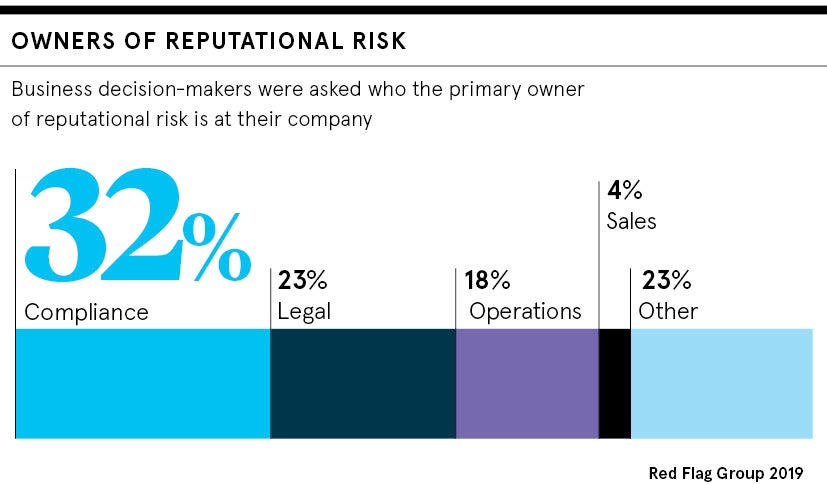Multi-billionaire investor Warren Buffett once famously pronounced: “It takes 20 years to build a reputation and five minutes to ruin it.” Since brand identity is, arguably, the biggest asset a company possesses, all risks posed to it must therefore be urgently examined by everyone involved, especially executives.
Marketers and brand teams have been the custodians of brand identity, quibbling over everything from Pantones and propositions down to the most infinitesimal detail. But branding must be appreciated as something so much more vital and all encompassing.
“Brand is what attracts new customers while retaining existing ones and presents a medium to introduce new services and products,” explains Sukhy Cheema, founder and chief executive of Branding London. “The more exposed your brand is to risk, the more attention this situation will need during your board meetings.”
Potential customers can shape brand values
When it comes to assessing the risk landscape for a brand, there must be constant vigilance on all fronts. “The marketing team spend an incredible amount of time, blood, sweat, yes even tears, creating powerful propositions and developing creatives that appeal to their target market,” says Nick Gold, founder and chief executive of Speakers Corner.
“Reputations can be tarnished in minutes, which means all that effort the marketing team has put in is reduced to rubble. Why? Because in a world of fierce competition, it’s the synergy in values between brand identity and the customer that often confirms the purchase decision.
“Each of us has values. We buy from brands where we share the same values. If we receive poor service or learn of unethical business practices, we walk away. A marketer can deliver award-winning campaigns, but all that means zero when the customers experience falls below expectations.”
It’s not just those at the top who should take responsibility, but it must trickle down. “Risks to a brand can appear within every part of an operation,” says business expert Erica Wolfe-Murray.
“From the supply chain through to a critical social media post that goes viral, every responsible company should have a plan in place. Brand is part of that whole package so every member of the board in their individual role needs to take responsibility for their area of expertise,” she says.
“Yes, the marketing director will probably have ‘brand’ on his or her desk more regularly, but if production is not delivering to the brand expectation that will have an impact across the company and needs to be addressed quickly.”
Who is responsible for brand identity?
Data from Reuters shows 82 per cent of investors want the companies they invest in to have a strong brand. This has led some experts to conclude that companies now need to establish a reputation department.
According to Robert Jones, professor of brand leadership at the University of East Anglia, in some senses having a strong brand identity can be a way of mitigating the risk. “Volkswagen’s emissions scandal badly damaged its reputation, but its brand was so strong that people continued to buy their Golfs and Polos,” he says, adding that though reputation and brand are intimately linked, there are subtle differences.
This is why the C-suite in particular must become more involved in the business of brand reputation and risk, examining it regularly. “Final responsibility for the brand has to rest with the CEO,” says Professor Jones. But creating a new position of chief brand officer could prove integral.
“Your reputation is what people think about what you’ve done in the past,” he explains. “Your brand is how people feel about what they’ll get from you in the future. So yes, a company should have a chief brand officer.”
In some cases implementing such a role is itself an exercise in rebranding. “In many companies, that’s now the title of the person who used to be called chief marketing officer,” adds Professor Jones.

“Chief brand, chief communications officers or even chief marketing officers are increasingly being placed on company boards and it’s an encouraging trend,” says Emma Kane, chief executive at Newgate Communications, who specialises in crisis management. “Companies operating this way will naturally have an advantage over those that don’t place value on their brand.”
Perhaps the world’s most famous chief brand officer is Bozoma Saint John, who went to Uber to try to transform its brand identity after a series of scandals. She left after a year claiming that while the company was “on its way to being great, it’s not there yet”. This illustrates perfectly the perils of creating the role of chief brand officer too late; a case of trying to undo damage rather than prevent it occurring in the first place.
Strong brand often comes too late
“While many companies will have a crisis communications plan gathering dust in a file somewhere, most don’t spend any time at all assessing the risk landscape, until it’s too late and they are blindsided by a reputational hit they could have mitigated if they had anticipated it sooner,” warns Lucy Chapple, head of strategy at communications consultancy Stand Agency.
“Getting an outside pair of eyes is essential to understand how perceptions of your brand have changed over time. Gathering this insight is an important first step, but it’s what you do with this brand insight that matters.”
Ultimately, it’s hard to overstate how important taking action to protect brand identity could prove. “C-suites aren’t as involved as they should be and they don’t assign the resources they should into building and protecting their brand,” Ms Chapple concludes.
“We’re seeing a handful of large companies appointing chief brand officers or chief reputation officers. It’s staggering how long it has taken for reputation to be represented at board level given it’s the most important asset of any organisation.”
Potential customers can shape brand values
Who is responsible for brand identity?





